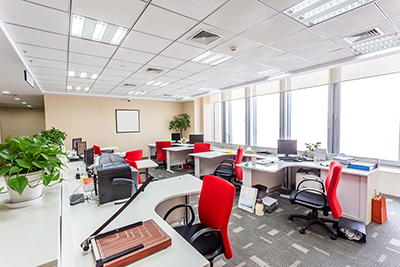
The Office of the Future, Revisited: 3 New Realities Shape Hybrid Workplace

Cushman & Wakefield issued a follow-up to its Office of the Future report last year, identifying three trends shaping workplace strategies. There’s good news and interesting news.
“Office of the Workplace Revisited is focused on the new realities shaping hybrid workplace strategies,” C&W said. “In this time of cautious confidence, office space is increasingly in demand. However, the role of the office will be forever changed as we enter the post-pandemic world. The hybrid movement has just begun, and there is no single blueprint for successfully implementing it. Each organization must approach its transition with the question, ‘What does hybrid mean for us?’”
The report focuses on three key trends that have significant implications as organizations experiment and develop new workplace strategies:
Demand for Office Space is Accelerating
The report said an improving economy, paired with strong office-using employment growth is driving office space demand.
“Demand is returning—and as with most office cycles, it is being driven by job creation,” the report said. “In less than two years since the onset of the pandemic much of the world has returned to pre-pandemic employment levels. By comparison, it took nearly three times as long after the Great Financial Crisis of the late 2000s for employment to return to pre-recession numbers.”
C&W said sectors that tend to be office-based are faring better than others—hospitality,
for example. In many countries, office-using employment is already back to Q1 2020 levels. “And even in countries where employment hasn’t fully recovered, it’s on track to return by the middle of 2022,” the report said. “Long term, U.S. office employment is expected to grow 50% faster than total employment by the end of 2030, and high-tech jobs are forecasted to grow twice as much.”
Hybrid is Here to Stay
C&W global Experience per Square Foot data shows employees with choice and control over where they work perform better. At the same time, data show employees need the office to support their desire to learn, make meaningful cultural connections to their organizations and to engage more deeply with colleagues.
“As of the last quarter of 2021, a fifth of U.S. employees indicated preferences to work in the office rarely and another fifth would prefer to never come to the office,” the report said. “To compete for talent in today’s environment where one out of five people prefer to never be in the office, corporate leaders will need to create office environments that inspire employees and draw them in. To compete for talent, companies need to create spaces that inspire employees and give them compelling reasons to come together with their colleagues.”
The Role of the Office Has Changed
“There is no one standard for the future,” the report said. “Most organizations believe the office is now the place for building culture and for inspiring creativity and innovation.”
The report said as organizations shift to focus more on these purposes, they will deemphasize individual dedicated desks and private offices in favor of creating more collaborative and specialty spaces.
“It appears the shift will not always necessarily reduce space per employee ratios as we are seeing many organizations reimagining space to emphasize collaboration while still utilizing similar amounts of square footage,” C&W said. “In fact, strong job growth has spurred many companies to add office space to house a larger workforce, even if in a more agile manner. Regardless of space allocation, the office will require a new type of flexibility: one focused on personal choice, permission and trust.”
The report emphasized there is no one standard for the future of the office—not only from company to company but from location to location within the same organization’s real estate footprint.
“Each organization’s real estate portfolio offers unique opportunities,” the report said. “What’s required of leaders is to comprehensively review not only the physical characteristics, functionality and utilization of existing spaces but the experience in each location to determine which spaces to keep, which to shed and which to adapt to support a more agile workforce.”
